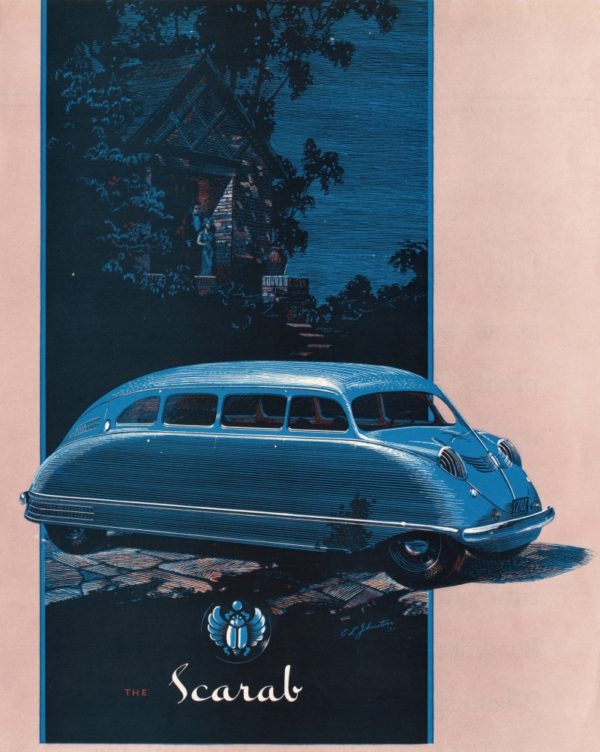
The Stout Scarab was produced during 1932-39 in very limited numbers, nine in fact. Its history is well recorded. William Bushnell Stout of Michigan was an automotive and aircraft engineer who worked on special designs during the thirties and forties. He was influenced by Buckminster Fuller’s Dymaxion car and asked Dutch-born John Tjaarda to design the chassis-less, rear-engined, Scarab as an office on wheels. Was there ever a car that looked more like its name? Its Egyptian scarab beetle motif was perfectly mirrored in the car.
The V-screen example in this 1936 advertisement was drawn by artist E. L. Johnston, using the eerie blue of the night sky to cast a glow over the car. The car was so costly that it could only sell to the super-rich of the day and thus expensive society-journal advertisements could be justified. But at least five examples survive today.







William Bushnell Stout was a remarkable engineer. He deserves to be remembered just for naming his first venture ‘The Stout Metal Airplane Company’. It was bought by Henry Ford in 1924 as the foundation for Ford’s aviation business which then produced the very successful Tri-Motor.
When Stout and his new bride dismebarked at Southampton to begin their European motorcycle tour/honeymoon, she had never ridden on a motorbike before. They travelled to Norway and back.
In WWII, Stout’s designs for pre-fabricated air-portable buildings were widely used as US forces recaptured Pacific teritories. He died in 1956. I strongly recommend ‘So Away I Went’, his 1951 autobiography